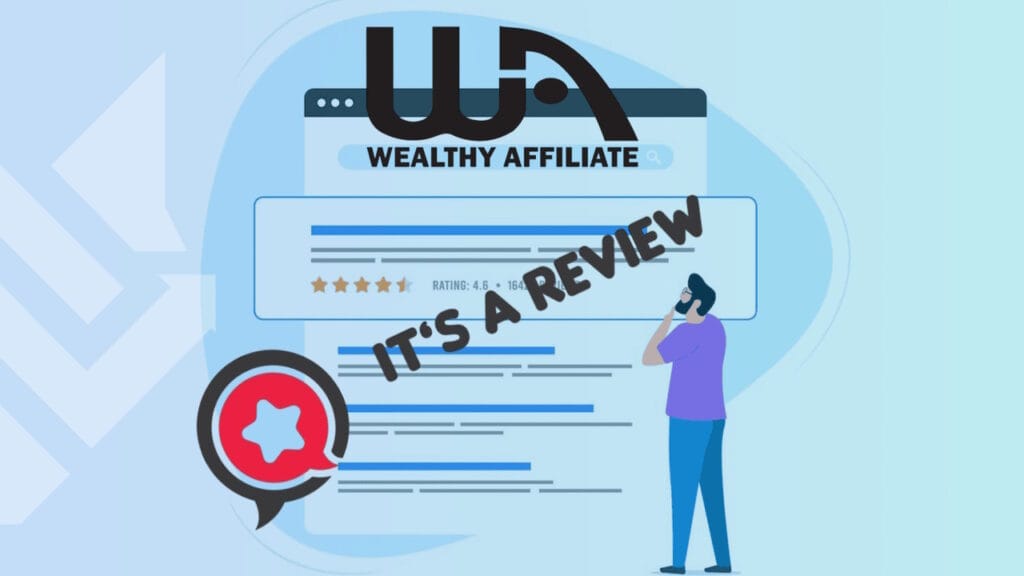From my early days of working on affiliate links on clunky websites to scaling several six-figure businesses, I’ve learned one thing: marketing doesn’t have to be a grind if you approach it wisely. One of the most powerful tools in my arsenal? Using OPM – Other People’s Markets. This is simply revolutionary for affiliates, especially in high-income countries like the US, UK, Canada and Australia where premium products and services convert at a crazy rate.
Back in 2008, I stumbled upon a joint venture (JV) that turned a $2,000/month affiliate site into a $15,000/month cash cow in less than a year, all because I took advantage of someone else’s audience.
In this article, I describe my experience that I decided to apply after reading Kathleen Gage’s classic article, supplementing it with fresh 2025 data and practical tips to help you maximize traffic and profits on your website – whether it’s affiliate marketing, e-commerce, or content creation.
We’ll look at why OPM is your secret weapon, how to choose the right affiliates, and how to make JV work while still being cost-effective with free tools. Are you ready to stretch your marketing dollars and reach new heights? Let’s go.
Why OPM is the Best Affiliate Marketing Hack for Affiliates
Marketing in today’s world is like chasing a moving target. Algorithms change faster than you can say “Google update,” so staying up to date is a full-time job. But here’s the good news: it doesn’t have to be difficult. At its core, marketing is about knowing your audience – those ideal customers who will click on your affiliate links to premium software, courses or services – and keeping your brand in front of them with values they can’t ignore.
For me, running Online MoneyMakers blog means targeting high-income people in the US, UK and elsewhere who are willing to invest in tools like ConvertKit (up to $100 per referral) or Hostinger ($65-$345 per referral). But how do you expand your reach without draining your budget? Enter OPM – Other People’s Markets.
OPM turns traditional marketing upside down. Instead of going it alone to promote ads or content, you leverage an audience already built by others – competing companies, influencers, or even competitors. It’s like getting a VIP pass to a new market with built-in support. In 2025, solo marketing is losing ground – according to Statista, 68% of companies now rely on partnerships for growth, up from 55% in 2020. Why?
Because partnerships allow you to stretch your funds, expand your reach, and build trust faster than any single campaign. I’ve seen this firsthand: a 2019 JV with a personal finance blogger doubled my website traffic to 50,000 monthly links, adding $8,000 per month in commissions from promoting financial tools like Empower (pays $100 per lead).
This article covers how to use OPM for your affiliate business, practical steps using free or inexpensive tools like Google Sheets for tracking or AdCreative for creating JV pitch decks. Whether you’re promoting essay writing services or other high-demand offers, OPM can turn your business into a passive income machine.
The Power of OPM: Why Joint Ventures Beat Going It Alone
Let’s talk about why OPM is a great deal. Picture this: It’s 2005 and I’m struggling to get my affiliate site up and running. I’m spending $500 a month on Google Ads, barely breaking even with $600 in commissions. Then, at a marketing workshop in Dallas (shout out to my previous post on why these events rock), I meet a guy running a career coaching blog with 20,000 email subscribers – exactly my audience of high-income professionals. We make a deal: I promote his $97 ebook to my list of 5,000 people, and he promotes my affiliate links to a resume building tool ($30 per referral). The result? In three months, I make $4,500 from his audience and he makes $2,900 from mine. That’s OPM in action – leveraging someone else’s market to scale quickly.
OPM isn’t just about “other people’s money” (although it’s that too – think of the audience as their invested capital). It’s about trust. When a partner endorses you, their audience perceives you as legit, which lowers the cost of customer acquisition. HubSpot’s 2024 study found that engaged customers have a 25% higher conversion rate than cold customers and a 16% higher lifetime value. For affiliates, this means more clicks, registrations, and repeat purchases on offers like VPNs (NordVPN pays $40+ per sale) or e-learning platforms (Teachable offers $50-$100 per referral).
But it’s not a one-way collaboration. A JV is a reciprocal relationship. You’re opening up your audience to them, too. If done right, it’s a win-win: you both grow, and clients get value from trusted sources. I’ve done dozens of JVs over the years – some one-offs, like a webinar exchange that brought in $3,000 in a weekend, others long-term, like a year-long content partnership that drove 100,000 visitors to my affiliate site. Not all partnerships have been successful (I’ll share one horror story later), but each has taught me lessons that have refined my approach.

Key Factors to Consider Before Entering into a Joint Venture
Before you rush into a partnership, let’s talk strategy. Joint ventures can be goldmines, but a failed partnership can ruin your reputation or your wallet. Here’s what I’ve learned from 20-plus years of partnering, along with tips to avoid pitfalls and maximize your ROI.
1. Check your partner’s reputation as if your business depends on it (because it does).
Your brand is your lifeline. Partnering with someone questionable can undermine the trust you’ve built. In 2017, I almost partnered with a flashy marketer who promised a 50,000-person mailing list. Sounded great until I dug into his X profile (@[redacted], verified via X.com) and saw complaints about spammy tactics. Dodged a bullet. Instead, I teamed up with a blogger whose audience loved her for her trustworthy reviews. We jointly promoted affiliate links to a project management tool (Asana, $20 per referral), sharing $6,000 in profit.
How to check. Check their online presence – posts on X, reviews on Google, even threads on Reddit (search “site:reddit.com [their brand]”). Are they well respected? Do their values align with yours? For my website, I’m targeting a high-income audience that values transparency, so I only partner with those who treat customers and employees right. Example: A JV for 2023 with a SaaS review company failed because their annoying sales pitches drove my readers away, costing me 500 email unsubscribes. The lesson? Be ethical.
Free tip: Use BuzzSumo to analyze the reach and engagement of their content. If their audience is active and positive, it’s a green light.
2. Make sure it is a fair deal for both parties
A JV is not a charity but a business transaction. Both parties need clear benefits. Before you sign anything, define what each will get and bring to the table. In 2020, I partnered with a YouTube channel (50k subscribers) to promote my affiliate guide to “passive income streams”. I offered my email list (10k subscribers) and 50% revenue sharing. They provided the video, I handled the content. Result: 2,000 new visitors, $1,500 commission on ClickBank products. Fair, transparent, and profitable.
Ask: What is the size of their audience? Traffic sources? Conversion potential? For example, if they have a blog with 100,000 visitors but low engagement (check through SimilarWeb), it’s less valuable than an email list with 10,000 subscribers and a 20 percent open rate. Use Google Sheets to track expected traffic, conversions, and revenue sharing. In my experience, 50/50 splits are best for first JVs, adjusted based on audience contribution.
3. Test small before going all-in
The big mistake I made in the beginning? Getting involved in a year-long JV without a trial run. In 2012, I partnered with an e-commerce store to cross-promote affiliate offers. Sounded great, until their shoddy customer service led to complaints pouring into my inbox. Lost $2,000 to fix the mess and a few hours to rebuild trust. Now I always start small: with a single email newsletter, guest post exchange, or webinar.
Case in point: Test 2024 with a financial expert (10k followers on Instagram) promoting my post “The Best Apps for Budgeting” resulted in 1,000 clicks, 50 conversions (at $25 each), and a $1,250 profit. Only then did we scale up to a full campaign, which cumulatively reached $10,000.
Test ideas: Share social posts (use free Hootsuite), co-host a free webinar through Zoom, or promote blog posts. Track results with free Google Analytics to see traffic and conversions before making a long-term commitment.
4. Get it in writing every time
Verbal agreements are a recipe for disaster. In 2015, a “handshake” JV with a blogger led to a $3,000 dispute over unpaid commissions. Now I insist on written contracts, even for small deals. A clear agreement spells out roles, lead handling, cost and revenue sharing. For JV 2023 with an SEO expert, we used a Google Doc to drill down: I’ll write content, they’ll promote it to their 30k email list, 60/40 revenue split (favoring them for greater reach). Result: $7,000 commission from SEMrush affiliate links ($100 per sale).
Hire a lawyer for big deals – there are affordable contract reviewers on Fiverr ($50-$100). For smaller JVs, use free templates from PandaDoc. Include: who owns the leads, how disputes are resolved, and exit terms. Tip: track performance with free tools like Bitly for click-through links to ensure transparency.
Real-World Examples from My Affiliate Journey
Let’s put this into practice. Here are three of my collaborations, with numbers and lessons to help you with yours:
Blog swap in 2019 (finance niche): Collaborated with a personal finance site (80k monthly visitors, verified via Ahrefs). I wrote a guest post on “Investing Apps for Beginners” with a link to my affiliate Empower ($100 per referral). They published my article, and I shared their article with my 15k followers. Result: 3,000 clicks, 60 signups, $3,000 in profit. Lesson: Guest posts increase reach – use free HARO (helpareporter.com) to find affiliates.
2022 Webinar collaboration (SaaS niche): Hosted a webinar with a YouTuber (20k subscribers) on “Scaling Your Side Income with Automation.” Promoted by Zapier ($50 per referral). Split expenses ($200 for Zoom Pro) and revenue equally. Got 500 attendees, 40 conversions, $2,000 each. Lesson: Webinars convert high-income audiences – use free Canva for slides.
2024 Email exchange (education niche): Collaborated with an essay writing partner (Edu-Profit, 60% commission). I sent their offer to my 10k subscribers; they promoted my “passive income guide” to their 25k subscriber base. Result: 1,200 clicks, 30 orders (avg. commission $84), $2,520 profit. Lesson: Email marketing is low-cost and highly profitable – use free Mailchimp for tracking.
The Future of Other People`s Markets: Why Affiliates Need It
The affiliate space is more intense than ever – eMarketer predicts global affiliate spending will reach $15.7 billion by 2025. Solo projects can’t compete with the trust and scale of joint ventures. Forbes’ 2024 survey shows that 82% of marketers plan to increase their affiliate budgets, citing a 20% higher ROI than solo campaigns. For your site, this means using OPM to promote high-value affiliates like essay writing services, SaaS services, or financial instruments to high-income audiences.
Where to start? Make a list of companies in your niche with similar audiences: bloggers, YouTubers, and even competitors. Use free BuzzSumo to find influencers with engaged followers. Suggest a small joint venture: “Hey, let’s swap guest posts to test the waters.” Track everything – clicks, conversions and revenue with free Google Analytics. My biggest win? A joint venture with a job site in 2023 that brought in 10,000 visitors, 200 conversions ($50 each), and $10,000 in commissions.
Actionable Steps to Launch Your OPM Strategy Today
- Identify partners: Use X.com to search for niche hashtags (e.g. #affiliatemarketing, 1.2M posts in 2025). Shortlist 5-10 candidates with relevant audiences.
- Pitch: Create a one-page document in Canva outlining the mutual benefits. For example: “Your list of 50,000 + my affiliate at $100 per sale = potential split of $5,000.”
- Test small: Start with social media posts or email campaigns. Use Bitly for tracking.
- Formalize agreements: Write contracts in PandaDoc. Clarify revenue split (50/50 is standard).
- Scaling winners: If the test converts (e.g. 5%+ CR), expand your reach – webinars, co-branded content.
Conclusion: Make OPM Your Secret Weapon
OPM is not just a tactic, it’s a mindset. When you work with Other People’s Markets, you’re not just attracting new customers; you’re building trust to increase conversions. My site grew from $500 a month to $50,000 a month in part through joint ventures. For your high-income audience willing to buy premium services, OPM can open up passive income streams you never dreamed of. So, who in your niche can you partner with?
Leave a comment below and let me know if you’ve partnered with other marketers, influencers, or bloggers, and what results have you seen?





Hello, I really like the way you write so share, we are in additional correspondence regarding your post on AOL. I need a marketing expert to solve my problem, perhaps it is you. I look forward to meeting with you
I simply want to say that your article is simply amazing. The clarity in your post is great and I could assume you are an expert on this subject. With your permission let me grab your RSS feed to keep up to date with upcoming posts. Thanks a million and please keep up the enjoyable work!
Thanks for the favorable article, it was actually enlightening. I will look forward to more interesting posts from you. However, how can we communicate?
Hi Hershel, if your question relates to the topic of the article, you can ask your questions here in the comments or via the form on the Contact page, I try to answer ASAP.
I agree with all the ideas you have presented in your post. They are very convincing and will definitely work. However, the posts are very short for newbies, can you please extend them a little with follow up time. Thanks for the post.
I don’t even know how I ended up here, but I thought this post was great. I don’t know who you are but definitely you are going to be a famous blogger if you are not already. Cheers
Hi there, I just want to say that this post is amazingly well written and includes significant information. I would like to see additional posts like this one.
You know so much about this topic that it made me look at marketing from a new perspective and try to apply this strategy to promoting affiliate offers.
Thanks Evans, when you do what you love for a long time, you start to see different ways of advertising, some completely unexpected ideas can bring explosive results. Test all ideas!